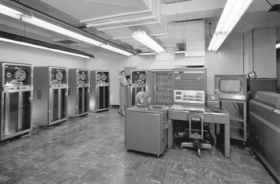Car Safety: How Your Car Can Communicate to Get You Home Quickly
 The Problem
The Problem
After a long tiring day at work, the drive home can be the last thing you want to do (especially if it’s in rush hour). You may be very tired or in a rush to pick up the kids. Either way this may affect your awareness on the road and put you at risk of being involved in an incident.
To resolve this, a huge trial is ongoing in the US for car safety technology. The project is called Safety Pilot Model Deployment and currently involves 300 cars (with another 2,550 vehicles still to be incorporated).
How it works
The main idea is to allow different vehicles on the road to communicate with each other, providing real time information that will help the performance of the driver. Data will be collated into information that will allow the driver to make an informed decision, whether it be to slow down due to a build up further down the road or to change their route. The system will also tell the driver when the car in front is applying the brakes.
Some models used in the trial will alert the driver to a new message via lights, tones and or vibrations. Helping even the most jaded of driver to react to an upcoming obstacle.
Current technology
Another piece of technology that is available in the trial, and exists on some BMW or Mercedes models, is a crash detection feature. This involves sensors on the car scanning for anything that may cause an imminent collision. If a collision were to happen, the car will automatically apply the breaks. This is an example of passive vehicle safety and allows the system to still be effective when it is used along side vehicles that do not share data.
What it means
These types of safety features could help reduce the amount of accidents and injuries. Which in turn could help lower insurance costs. It would also be a benefit to car fleet management companies, who rent out vehicles. Giving them peace of mind that even if the driver is not as adept as desired, the car should help look after itself.
Issues
Of course the trials are still newly formed in the grand scheme of things. Mitigation is being developed for when large volumes of traffic are present (eg on the motorway). The technology also needs to be made universal. After all, the whole system would be flawed if certain models cannot share data or if it was misinterpreted.
There are other features that customers may want, such as the use of mobile devices for communication between vehicles. Whilst this is something customers would like, it doesn’t seem to be too likely at the moment. Smartphones can cause data congestion, as well as the obvious distractions to drivers that vehicle companies would want to avoid.
The future
The outcome of these trials will ultimately lead to the development of a more automated form of driving, where a computer in the car can intervene if the driver fails to respond to a warning message.
